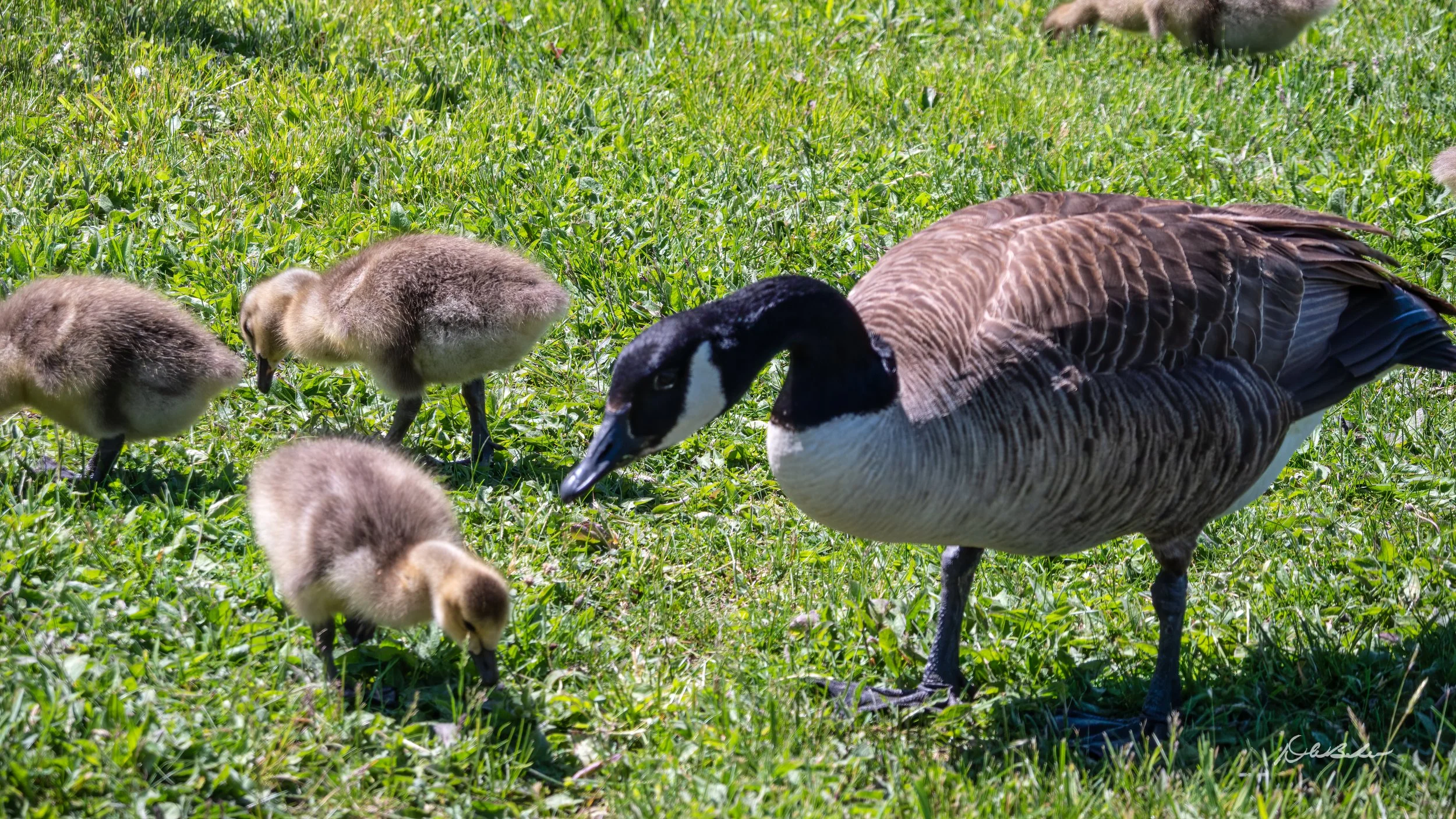New Kids on the Block
We’ve hit the time of year where we are beginning to see the fruits of the labor of our breeding birds here in the Hudson Valley. This week, we came across several new families in which the little ones have fledged and are trying out their new wings. Our first group of the week was a family of Canada geese. Canada geese chicks, also known as goslings, are born covered in soft, yellowish down that provides insulation and camouflage. From the moment they hatch, these precocial birds are capable of walking, swimming, and feeding alongside their parents, who fiercely protect them from predators.
An image of a Canada goose with several goslings born back in May.
Goslings grow rapidly, developing their juvenile feathers within a few weeks as they prepare for their first flight. Their early development and strong parental care contribute significantly to the survival of Canada geese populations across North America. These chicks have been around for a while and are now sporting their adult-look-alike plumage and moving about out in the open with their guardian parents.
The next group of young birds belonged to the European Starling family. While these juveniles have recently left the nest, they are still look to their parents for food and protection for another several weeks. These youngsters will eventually develop the iridescent plumage characteristic of adult starlings. During this stage, they practice flying and foraging under close supervision, gradually gaining independence. Adult birds were never far away from these youngsters and were very wary of me being close enough to photograph this little family group. I quickly retreated so that I would not cause the adults any undue stress. The young birds seemed oblivious to my presence, however.
Four young European starlings patiently awaiting their next meal from the adults tending to their needs.
These two young birds probably have mom or dad in their sights. The fluffy down of the fledgling has pretty much disappeared in these juvenile birds with dark gray plumage and dark bills.
Later in the day, I had returned home and was tending to chores around our home. As I came around the side of the house, I heard loud constant chirping in front of me. A little fledging House sparrow was sitting on a weathered 4X4 apparently calling out to a parent. I was concerned that it may not be able to fly very well, but soon found that it was totally capable of short bursts when it wanted to.
I found that House sparrow fledglings are capable of “fluttter flight” very shortly after leaving the nest and will most likely be flying well within a day or two. Later, I noticed that some of this birds siblings were perched on the roof looking for mom and dad to come by with some food for them. While young House sparrows learn how to fly quite well after only a very short time after leaving the nest, they are dependent upon their parents for food and protection for up to 4 weeks after fledging.
House sparrows looking for their next morsel.
Now let’s see what July brings as we get deeper into the summer months. Stay tuned……




